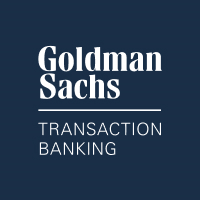For decades, international payments have facilitated cross-border trade and commerce, paving the way for the emergence of new industries and market providers.
Today, corporate vendor payments are critical and impact other business processes as well. These include expatriate payroll, intercompany flows, tax payments, and health care subsidies.
Many corporations know that payments, especially cross-border transactions in different currencies, are complex. They can involve numerous time zones, jurisdictions, and regulatory frameworks. Global payments can be hard to track and slow to settle. Traditional transactional FX solutions have been constrained by a lack of flexibility, confusing payment formats, and a dearth of customisation to suit the needs of users.
Moreover, the lack of FX payment cost transparency is particularly nettlesome. Many multinational corporations still face issues when trying to determine their complete end-to-end cost to transact in foreign currency payments. Fortunately, this is an issue that can be addressed and solved.
Navigating the costs of FX payments
A few basic factors comprise the cost of an FX transaction, including exchange rates, spreads, costs of funds, and correspondent bank processing fees, or the fees tacked onto the fee charged by the bank originating the transaction.
While existing market providers might stress that one factor is lower than a competitor’s, that same institution might have high fees for another factor, offsetting those savings. In other words, clients should consider their all-in costs.
There are also other factors to consider. Some financial institutions charge a commission for handling and executing the trade—either a fixed fee (irrespective of value) or a relative fee (the higher the value, the higher the commission).
It also is common for banks to charge clients for each payment they make or even ones they do not (some banks have inactivity fees for those who fail to meet a monthly or quarterly minimum).
On top of that, market providers may add fees for posting each payment to a client’s account. In many cases, banks charge a regular fee for providing a monthly statement of those transactions or for generating data analytics on the payments processed.
What is behind all these charges? Mostly technology, as the upkeep of legacy banking infrastructure, global onshore operations, and a general liquidity footprint can create a large cost base that requires multifaceted revenue streams to offset.
Further, legacy technology costs are to blame for some excessive fees with other providers who do not have a manageable cost of funds.
Taking control of cross-currency payments
Given the complexities and challenges that companies face in global money movement, they can benefit by choosing banking providers built entirely on APIs, which offer a more intuitive, flexible, and data-rich approach. These features make treasurers’ lives easier by digitizing and improving the payments experience. Critically, they also give them control over what processes are most important to them.
It is essential for corporates that their banking providers also provide transparent, scalable, and customizable cross-currency payment solutions. Treasurers should be able to input their preferred settlement parameters, eliminating traditional market charging and billing practices, and pre-negotiating spreads allows clients to have full transparency into what they’re paying for. What is equally important is that the banking provider should have access to a large global liquidity network and payment rails. The result for clients is reduced transaction costs overall and fewer miscellaneous fees traditionally associated with FX payments – such as lifting fees and beneficiary bank account fees.
The combination of transparent and customizable payment solutions along with access to a large global payments network ultimately provides clients with the best of both worlds – readily doing business globally while limiting traditional costs and fees.
The payment transformation journey
The global payments market will continue to evolve. A confluence of factors is driving that change, including technology, treasurers’ expectations, global demographics, and regulations.
The market is already being reshaped by both traditional and emerging payment providers—not only legacy banks but also fintechs and corporates that are pivoting to offer payment solutions. As a result, service providers as well as users are beginning to seek off-the-shelf solutions that can be tailored to achieve the best results for all parties.
Payments are at the core of transaction banking, and the drive toward more transparency—from the operational execution to the cost of making the payment itself—is crucial. Global payments are even more integral to international business operations in need of supporting their customers and dealing effectively with their suppliers.
Moving cash from one location to another should be a simple process, and banking providers that can help clients navigate the current complexities of the global payment ecosystem will ultimately put them back in control when it comes to managing their cross-currency payments.

